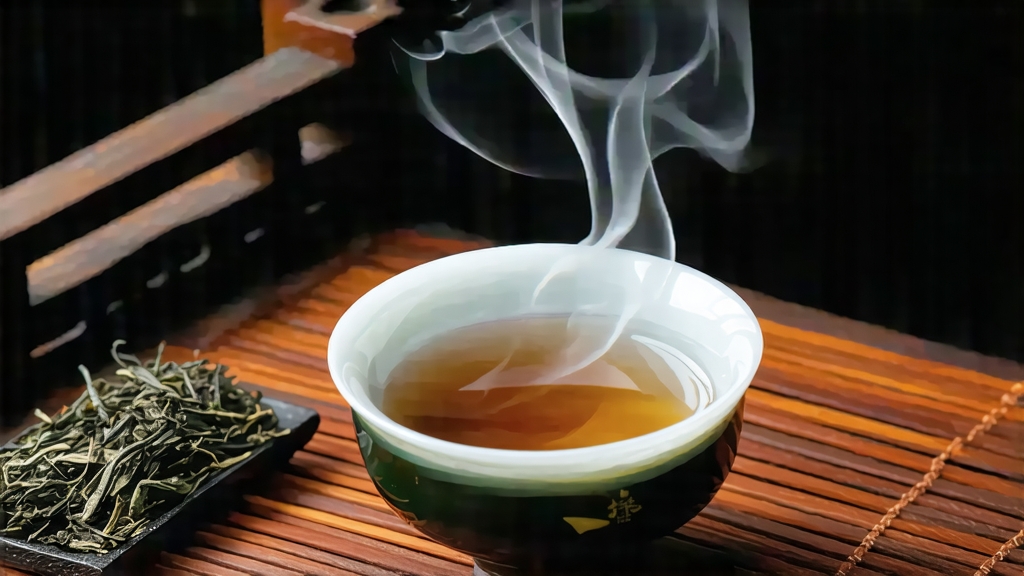
High in the folds of northern Fujian’s Wuyi Mountains, morning fog lifts off the bends of the Nine-Dragon Stream and settles on terraces of weathered Danxia stone. Here, at altitudes between 200 and 800 metres, rows of dark-green bushes cling to crevices once hollowed by dynastic monks and Ming-dynary imperial tea officers. Among the dozens of cultivars that share this UNESCO World Heritage landscape, one name is spoken with particular reverence: Shui Xian, literally “Water Sprite.” Locals insist the plant arrived from nearby Jianyang more than three centuries ago, carried by a Buddhist monk who believed its orchid-like aroma could “wash the dust from the mind.” Whatever the legend’s truth, the cultivar found its true voice only after it was grafted onto the mineral bones of Wuyi, becoming the flagship cliff-grown (yancha) oolong that now anchors the category in the global imagination.
Shui Xian is not a single static tea; it is a spectrum of styles whose personality is shaped by three variables—garden elevation, soil chemistry, and, most decisively, the length and temperature of charcoal roasting. Traditionalists speak of three roasting “waves.” The first, qinghuo (light fire), preserves bright floral top notes reminiscent of white lilac and fresh lychee peel. A second, zhonghuo (medium fire), deepens the cup into honeyed peach, toasted almond and a faint whiff of sandalwood. The third, zhuhuo (heavy fire), pushes the leaf through twelve or more hours of pine-charcoal embers, conjuring cacao nib, pipe tobacco and the evocative “yan yun” or “rock rhyme,” a lingering mineral coolness that feels like licking a wet stone. Each grade is further classified by micro-garden: Zhengyan (true cliff), Banyan (half cliff), and Zhoucha (river bank). Zhengyan lots, harvested from narrow ledges where roots grip igneous rock, fetch prices that rival Burgundy grand crus, yet even humble Zhou-cha Shui Xian can astonish when coaxed by patient roasting.
Craft begins in the cool dawn of late April. Only the middle three leaves and the tender bud are plucked, ideally before 10 a.m. while dew still pearls the serrated edges. The baskets are rushed to the village alleyways where bamboo trays await. There, with the same choreography used for Song-dynasty tribute teas, the leaves are withered first in the open air, then on waist-high bamboo racks suspended over smouldering charcoal pits. Intermittent tossing in deep wicker drums bruises the margins, initiating oxidation that will halt at roughly 30 %—the sweet spot where green vegetal notes surrender to amber complexity. After the brief “killing-green” pass in a 230 °C drum, the half-oxidised strips are rolled, twisted and then baked multiple times. Master roasters still prefer the squat, white-ash kilns built from local red brick; they feed the fire with longan-wood charcoal whose steady, low-aroma heat penetrates the leaf without masking its terroir. Between each bake the tea “sleeps” in linen sacks for weeks so that residual moisture migrates outward, preventing the sour, smoky taint that plagues rushed modern versions. A traditional Shui Xian may not reach the market until the autumn equinox, by which time it has shed its youthful swagger and acquired the poised depth connoisseurs prize.
To brew Shui Xian well is to balance respect for tradition with the pragmatism of a traveller who may carry only a porcelain cup and a kettle. The gongfu approach—small pots, quick infusions—remains the benchmark. Begin by pre-heating a 120 ml Yixing teapot or, more democratically, a white porcelain gaiwan. Use 6–7 g of leaf, roughly two heaped tablespoons. The first rinse, done with water just off the boil (95 °C), is discarded after five seconds; think of it as waking the dragon. Subsequent steeps progress from ten seconds to two minutes, releasing layers that move from roasted grain to orchid, then to iron-rich stone and, finally, to a sweet, cooling finish that lingers at the back of the throat. A single portion of leaf can yield eight to ten infusions, each